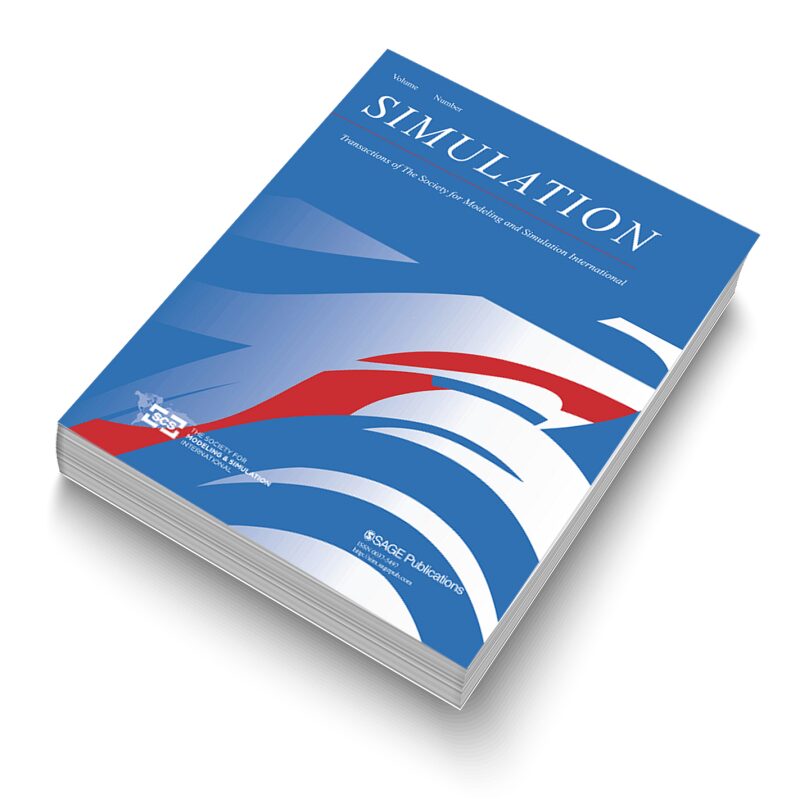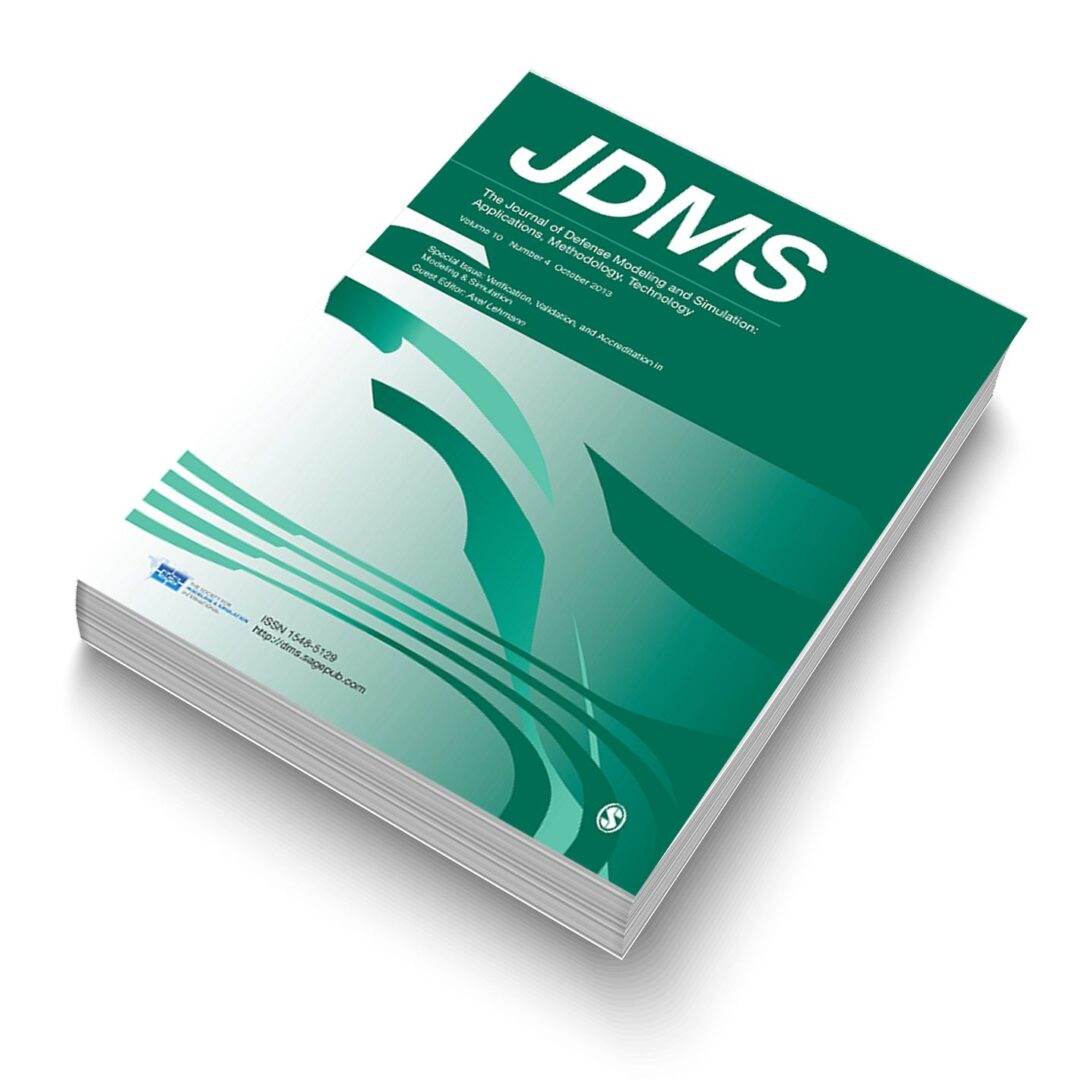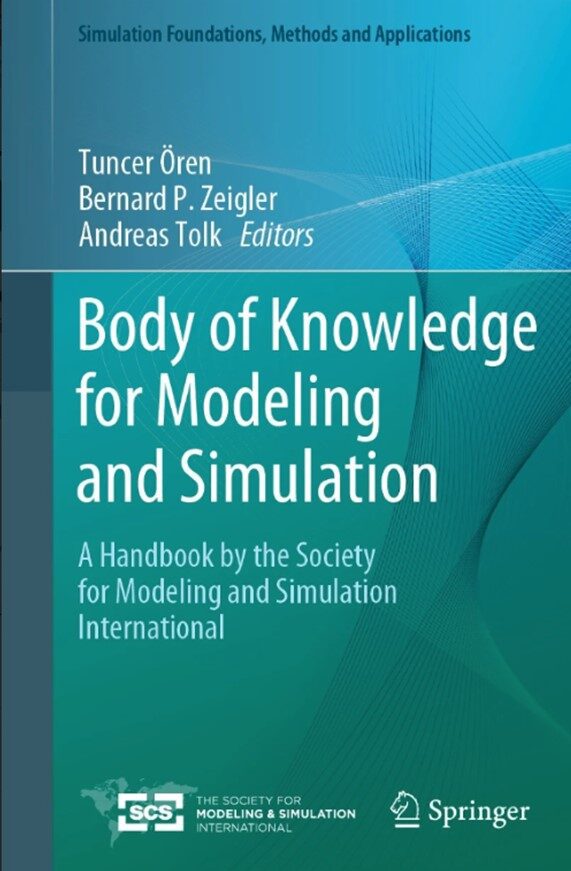SCS Publications
The Society for Modeling and Simulation International (SCS) offers two of the most highly-rated premier journals on Modeling and Simulation. Simulation: The Transactions of the Society for Modeling and Simulation International and The Journal of Defense Modeling and Simulation: Applications, Methodology, Technology (JDMS).
SIMULATION: Transactions of The Society for Modeling and Simulation International is a publication from The Society for Modeling and Simulation International and is a monthly refereed journal devoted to advancing the discipline and profession of modeling and simulation. The journal in both print and electronic form consists of two distinct sections–one devoted to theory, the other to applications. Published articles must have clear relevance to general modeling and simulation issues. In addition to its archival mission, the journal aims to help professionals and researchers, particularly those involved in multidisciplinary projects, apply advances in modeling and simulation theory, methodology, and technology to their application areas.
Methodology papers should be original articles of lasting value dealing with contributions to the modeling and simulation field that are methodological in nature. Areas of interest include, but are not limited to:
- model execution (e.g., parallel or distributed simulation);
- simulation interoperability;
- modeling techniques, languages, and development systems;
- analysis methodologies and techniques;
- verification, validation and accreditation;
- randomness in simulations, (e.g., random number generation);
- techniques for real-time simulation, (e.g., human-in-the-loop), hardware-in-the-loop, or on-line simulation.
Purely mathematical, computational, or empirical results, however valuable, are considered more appropriate to the many journals specializing in these areas. General approaches, formalisms, algorithms, or techniques should preferably be illustrated with significant applications that demonstrate their applicability to real-world problems.
Applications papers should be original articles describing mature applied work involving computational accounts of modeling and simulation. As this is a modeling and simulation journal, application papers should contain a detailed description of the modeling and simulation methods employed. The work should advance the state of the art in modeling and simulation in general, or the use of modeling and simulation in a specific application area. Proposals for new ways of looking at modeling and simulation must include demonstrations of effectiveness. The methods and applications of modeling and simulation in both well-established and emerging areas are included. Application areas of interest include, but are not restricted to:
- Computer Science: Computer networking and communications, high-performance computers, real-time systems, mobile and intelligent agents, simulation software, and language design.
- Engineering: System engineering and design, aerospace, air and surface transportation systems, microelectronics, mechatronics, manufacturing systems, chemical engineering, and robotics.
- Natural and Life Sciences: Chemistry, physics, biology, ecology, medicine, and biomedicine.
- Military: modeling and simulation for training, analysis, and acquisition.
- Social and Cognitive Sciences: economics, demography, politics, human behavior, and cognition
Authors are encouraged to consult past issues of Simulation for examples of articles within its scope. The principal focus of the journal is on research papers, however comprehensive review and tutorial papers that explain methodological topics in modeling and simulation are also within the scope of the journal. All submissions will be reviewed for technical quality and understandability to the general reader.
Special Issues: Proposals for special issues should be accompanied by the curriculum(a) vitae of the proposed guest editor(s) and will be reviewed for their relevance to the journal objectives, significance, topicality, and balance.
The Journal of Defense Modeling and Simulation: Applications, Methodology, Technology is a publication from The Society for Modeling and Simulation International and is a quarterly refereed archival journal devoted to advancing the practice, science, and art of modeling and simulation as it relates to the military and defense mission areas. The journal's primary focus is to document, in a rigorous manner, technical lessons derived from practical experience. The journal also publishes work related to advancing defense systems modeling and simulation technology, methodology, and theory. The journal covers all areas of the military/defense mission, focusing on the practical side of systems simulation and pure theoretical applications.
The journal seeks contributions that provide in-depth descriptions of applications of modeling and simulation to defense systems and developments of new simulation-based military technologies. Methodologies and theories that demonstrate achieved, or potential, significant improvements in defense modeling and simulation practice are also welcome. Submissions will be judged for their contribution to the development of a robust and reliable knowledge base for the application of validated modeling and simulation principles to military/defense systems. Comprehensive review and tutorial papers that explicate topics in modeling and simulation that fall within the journal's aims and scope are welcome and will be reviewed both for technical quality and understandability to the general reader. The journal will be of prime interest to developers, researchers, educators, and managers who are interested in lessons learned from the experiences and conclusions documented in the articles.
The Body of Knowledge (BoK) handbook is a publication sponsored by The Society for Modeling and Simulation International and it collects and organizes the common understanding of a wide collection of professionals and professional associations. It examines theoretical and practical challenges and addresses the many facets of Modeling and Simulation for scholars, students, and practitioners. As such, it affords readers from all science, engineering, and arts disciplines a comprehensive and concise representation of concepts, terms, and activities needed to explain the M&S discipline.
SCS Conference Proceedings is a publication from The Society for Modeling and Simulation International and is assembled each year, from our Modeling and Simulation conferences. SCS publishes a collection of academic papers in the context of our conference. Conference proceedings typically contain the contributions made by researchers at the conference and are offered in a set of proceedings books by Curran Proceedings.
For questions about our journals and publishing, please go to our FAQ webpage.





